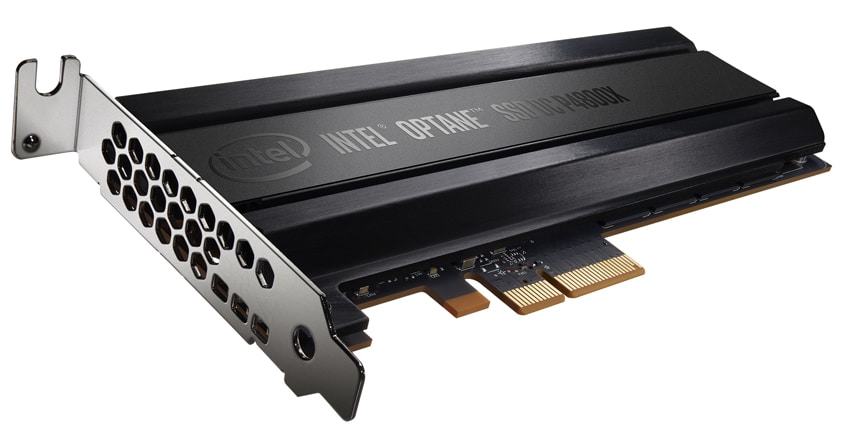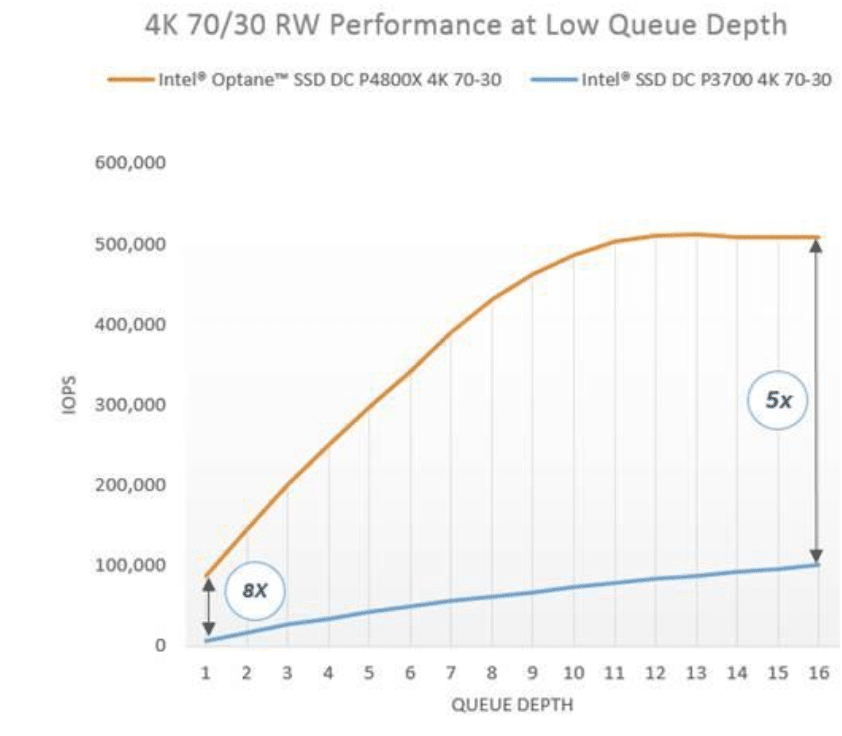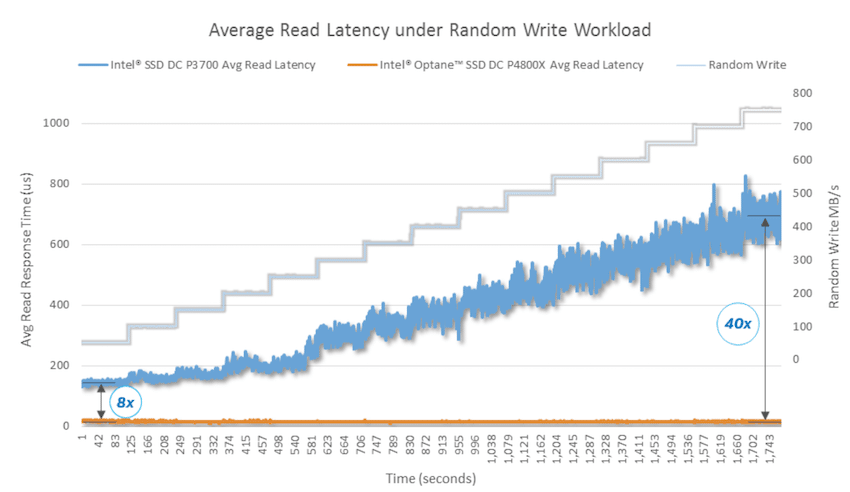
Back in July of 2015, Intel and Micron announced their partnership on a new type of NAND technology that they initially named 3D XPoint (pronounced cross point). The new technology promised several things including a big boost in performance. About a month later Intel announced that their version of 3D XPoint would be called Optane. Neither company had much to say until today, Intel is revealing its first enterprise Optane product, the Optane SSD DC P4800X series.

The Optane SSD DC P4800X series combines some attributes of both memory and storage. This results in high throughput, low latency, high QoS, and high endurance. This can help companiess break through some of the bottlenecks associated with storage to both accelerate some applications and allow more work per server. The P4800X initially comes in just a 375GB capacity in an add-in-card form factor (drives up to 1.5TB and U.2 form factor coming later this year). The drive acts just like an SSD and its performance profile offers new levels of performance to something like a small database that can fit on the drive. The P4800X can also extend memory pools by sharing system memory with the SSD via an additional (cost not disclosed) Linux-based caching software. This would result in a larger, more affordable memory footprint leading to the ability to gain new insights via analytics.
Looking at performance, Intel states that the new Optane SSD DC P4800X series can deliver 5 to 8 times the performance at low queue depth workloads. According to Intel, Optane can hit a throughput of 500K IOPS or 2GB/s at a queue depth of 11. As far as latency goes, the Optane SSD is purported to keep its latency below 30μs even when it is withstanding up to 2GB/s of random write pressure. The P4800X also comes with high endurance, 30DWPD and up to 12.3PBW for this initial effort. Compared to existing NAND drives, the 2TB Intel P3700 for instance is capable of 17DWPD, but since it's able to spread that wear over a larger NAND pool it can offer a much higher lifetime 60PBW. The 400GB P3700 NVMe SSD offers 7.3PBW, with a lower 10DWPD rating. While endurance is very good for this class of product, it's not exactly a huge step forward.
Many of the early XPoint marketing points emphasized the raw performance gains XPoint offers versus traditional NAND. Looking at lower queue depths, when Intel's data shows most drive activity takes place, we can see that the P4800X ramps much more quickly than Intel's current P3700 SSD. The assertion here is that organizations will see not just better performance, but better performance where it counts, in the most active queue depths. This is a significant departure from current SSD marketing which often quotes gigantic IOPs performance at very deep queue depths.
Another great visual comparison between the Optane SSD compared to the P3700 is the measurement of read latency while the drives are being pounded by random writes. As the workload (grey line) is stepped up, the P3700 shows the expected gains in latency, while the P4800X pretty much maintains a flat line at the bottom. In the end the P4800X nets a 40X improvement over the P3700, which was unable to scale up any further in this particular benchmark.
Intel didn't provide many details on the construction of the drive, which leads to questions around overprovisioning and endurance handling, especially given the modest capacity at launch and the fact that Intel is targeting high write workload environments. According to Intel, the 3D XPoint technology memory media is a write-in-place media there is no defragmentation needed, so overprovisioning the Optane drive won't result in performance increases. To further illustrate this point, the controller architecture is a 7-channel controller, with 4 media die per channel, or 28 die total for the 375GB drive. The additional capacity is used for ECC and firmware.
Key specifications:
- Capacity: 375GB
- Form Factor: HHHL AIC
- Interface: PICe 3.0 x 4, NVMe
- Latency: <10μs
- Performance
- QoS: 99.999%
- 4kB Random Queue Depth 1, R/W: <60/100μs
- 4kB Random Queue Depth 16, R/W: <150/200μs
- Throughput:
- IOPS Random 4kB R/W: Up to 550/500k
- IOPS Random 4kB 70/30 Mixed R/W: Up to 500k
- QoS: 99.999%
- Endurance:
- 30 Drive Writes per day (JESD219 workload)
- 12.3 Petabytes Written (PBW)
- Power:
- AIC: 12V (3.3V Aux) Supply Rail
- Active/Idle: Up to 18 W/5 W (TYP)
The P4800X is being shipped now in directed availability and is expected to be generally available in the second half of this year. MSRP for the current 375GB SSD is $1520, though pricing will depend a good deal based on volume. Even in this low capacity form factor, at the launch event for media last week, several Intel partners came to discuss how they're using the cards. HPE for instance talked about their 3D Cache for 3PAR, which they showed late last year. VMware was on hand to discuss major performance gains in vSAN when using the P4800X as the cache drive. While those are both longer-term initiatives that aren't immediately available, Supermicro is expected to be offering the drives in systems right away.
A 750GB version pf the P4800X is slated for the second quarter of this year, with the 1.5TB coming second half. Intel expects to ship U.2 form factor drives in 375GB capacity the second quarter of this year, with the 750GB and 1.5TB drives coming second half. Client SSDs based on Optane have not been announced but are expected to be available toward the end of this year, which should be plenty exciting for professionals.
Sign up for the StorageReview newsletter


